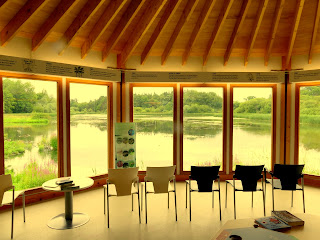It is amazing just how many specimens one misses if alone. However, with ten pairs of eyes many more species are found. And this was the case on Saturday 14th October with Haywards Heath u3a Nature walks group. Especially observant was Deborah for finding fungi that I had missed. Hilary’s knowledge and enthusiasm was also a great asset. She differentiated a desiccated cow pat from a dried bracket fungus by the sniff test: it was a bracket! Many links are included in this report should you wish to discover more about these vital organisms.
All fungi can be eaten once. Do NOT assume that any of my suggested identifications are correct!
The churchyard was disappointing. The Russula fungi we found last year under the solitary pine were not evident. However, we did marvel at the lichen growing on the gravestones and on a wooden bench. See also https://www.woodlandtrust.org.uk/blog/2019/04/what-is-lichen-seven-types-of-lichen-found-on-trees/
A very old oak had an Artist’s Bracket fungus in the medieval meadows. A peculiarity of this fungus is its use as a drawing medium for artists. When the fresh white pore surface is scratched, dark brown tissue under the pores is revealed. The shading becomes permanent once the fungus is dried. This is what gives Ganoderma applanatum its common name. With a marlin spike, I engraved a letter G in it to prove the point.
The wax caps we hoped to find were elusive.
The woodland was more rewarding with Amethys deceiver among the leaf litter, which is similar in appearance to the poisonous Lilac fibre cap.
A beautiful Porcelain fungus was found on a fallen dead beech branch. This fungus led to the creation of a safe and effective group of agricultural fungicides called 'the strobilurins', which have improved yields of wheat and fruit crops by protecting them from powdery mildew attacks. Ref. https://www.woodlandtrust.org.uk/trees-woods-and-wildlife/fungi-and-lichens/porcelain-fungus/
Fungi are often host specific. A birch grove sported Fly agaric and round or hoof-shaped Birch polypore mushrooms.
Panther cap fungi are uncommon. These were the first I had seen in this wood. Ref: https://www.inaturalist.org/taxa/48418-Amanita-pantherina
The turkey tail fungi grow throughout the year on trees and dead wood.
We saw a solitary Bolete, which was surprising and intriguing crust fungi.
Deborah spotted a puff ball as we left the wood.
My thanks to Ruth, Hilary, Gloria, Geraldine, Anne, Penny, Stella, Deborah and Sue for making this walk such a joy. I’m sorry to those who were turned away. It is however impractical to have more than ten on such walks.
Is it a fungus or a dried out cow pat? Only one way to find out! Sniff, sniff... A fungus declares Hilary!


















































